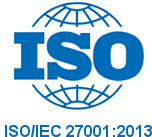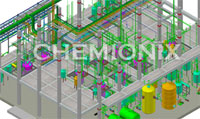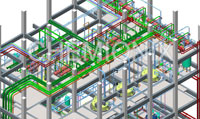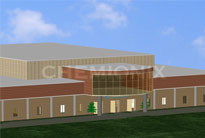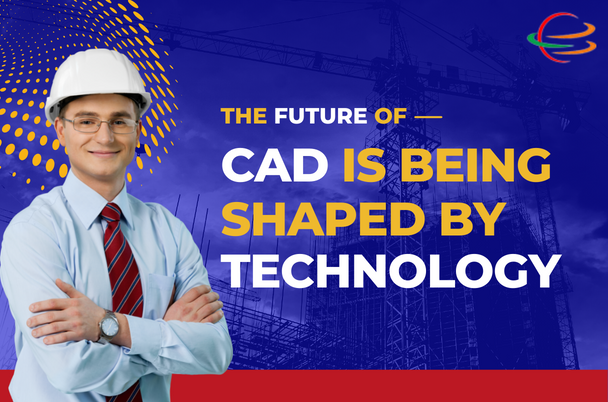The Future of CAD, or Computer Aided Design, is being shaped by technology.
This technology is playing an increasingly important role in the design and manufacturing processes of many different products.
It is being used to create more efficient and complex designs, reduce costs, and streamline processes.
In the past, CAD was used primarily as a tool to draw out product designs.
These designs were used to create blueprints or prototypes.
However, with the advent of technology, CAD Conversion Services have become an extremely powerful tool for creating detailed and accurate designs.
With the help of powerful software, CAD can now be used to create complex designs that can be easily modified with minimal effort.
The use of 3D printing is also becoming increasingly popular in the design and manufacturing processes.
3D printing is a process in which a 3D object is printed directly from a computer-aided design. This allows for the creation of complex objects with intricate details and textures.
3D printing is being used to create prototypes, as well as finished products. In the future, 3D printing may become the primary means of producing products.
The use of virtual reality is also being explored in the design and manufacturing processes.
Virtual reality can be used to create realistic 3D simulations of a product or environment.
This can be used to test out different design ideas or to explore the possibilities of a product before it is actually produced.
Virtual reality can also be used to create a more immersive experience for the user.
In the future, CAD will be used in a variety of different ways.
It will be used to create more efficient and complex designs, reduce costs, streamline processes, and create more realistic and immersive experiences.
As technology continues to evolve, so too will the use of CAD to BIM Conversion Services.
The future of CAD is being shaped by technology, and it is an exciting time for the industry.
As technology continues to develop, CAD will become even more powerful and versatile.
With the help of powerful software and 3D printing, the possibilities are endless.
How CAD Evolved
CAD has its roots in the late 1960s and early 1970s, when it was first used to create two-dimensional (2D) drawings of mechanical parts.
At this time, the technology was mainly used in the aerospace industry, and it was limited to creating basic 2D drawings.
However, it was soon realized that the technology could be used to create more complex 3D designs and models.
This realization led to the development of the first 3D CAD systems in the 1980s.
The introduction of 3D CAD systems had a major impact on the way design and manufacturing processes were conducted.
Designers could now create and modify complex models in a fraction of the time it would take to do so manually.
This allowed companies to reduce their design and production costs, as well as quickly adapt to changing customer demands and market conditions.
In the 1990s, CAD technology continued to evolve with the introduction of advanced features such as parametric modeling and assembly drawings.
This allowed designers to create complex models faster and more accurately than ever before. In addition, the introduction of computer-aided engineering (CAE) software allowed designers to simulate product performance, allowing them to create better-performing products.
The 2000s saw further advances in CAD technology, with the introduction of 3D printing and other rapid prototyping technologies.
This allowed designers to quickly and cheaply create physical prototypes of their designs, which could then be tested and refined.
This technology has since become a vital part of the design process, allowing companies to reduce their development costs and bring products to market faster.
Today, CAD Conversion Services continue to evolve with the introduction of virtual reality (VR) and augmented reality (AR) tools.
These technologies allow designers to visualize their designs in real-time, allowing them to make quick changes based on the results of their simulations.
In addition, the emergence of cloud-based CAD systems has allowed designers to collaborate on projects in real-time, regardless of their physical location.
Today, even paper design can be converted to CAD by the use of Paper to CAD Conversion Services.
Overall, CAD technology has come a long way since its first introduction in the late 1960s.
It has revolutionized the way products are designed and manufactured, allowing companies to reduce their design and production costs, quickly adapt to changing customer demands, and create better-performing products.
As technology continues to advance, the possibilities for CAD technology are virtually limitless.
The Future Of CAD
The advancement of CAD technology has enabled designers to create more detailed and accurate models and designs than ever before.
This has opened up completely new possibilities for the design of complex and intricate products, as well as for the creation of virtual and augmented reality applications.
One of the most exciting prospects for the future of CAD technology is the development of 3D printing.
3D printing has already been used to create products such as medical prosthetics and consumer goods, but its potential applications are nearly limitless.
In the future, designers will be able to use 3D printing to create complex parts and products that were previously impossible to create with traditional manufacturing methods.
Another exciting development in CAD technology is the development of artificial intelligence (AI).
AI has the potential to revolutionize the design process by automating certain tedious and time-consuming tasks. AI applications such as generative design can take advantage of algorithms and machine learning to create designs that are optimized for specific criteria, such as cost or performance.
The development of virtual and augmented reality is another area where CAD technology is likely to have a major impact in the future.
Virtual reality (VR) and augmented reality (AR) will enable designers to experience their designs in an immersive environment and make modifications and improvements to them in real-time.
This will enable designers to create more detailed and accurate designs more quickly, and with less effort.
Finally, CAD technology is likely to have a major impact on the way that designers collaborate with each other in the future.
The development of cloud-based CAD Conversion Services will allow designers to collaborate with one another in real-time, regardless of where they are located.
This will enable designers to quickly share their designs and make modifications to them together, as well as to easily communicate with each other.
The future of CAD technology is an exciting one, and it is clear that it will have a major impact on the way that products are designed and manufactured in the future.
By taking advantage of the latest advancements in CAD technology, designers will be able to create more accurate and detailed designs than ever before and collaborate with each other more easily.
Ultimately, this will lead to a future where products are designed and manufactured more quickly, efficiently, and cost-effectively than ever before.
Get the Best CAD Conversion Services
Chemionix is the leading company for CAD conversion services, paper to CAD conversion services, CAD To Bim Conversion Services, and to Outsource 2D CAD Drawings Services.
You get the best services with fast delivery, qualified professionals working on your CAD project, and an amazing 3D visualization of your project.
Hire Chemionix’s CAD Conversion Services now.


